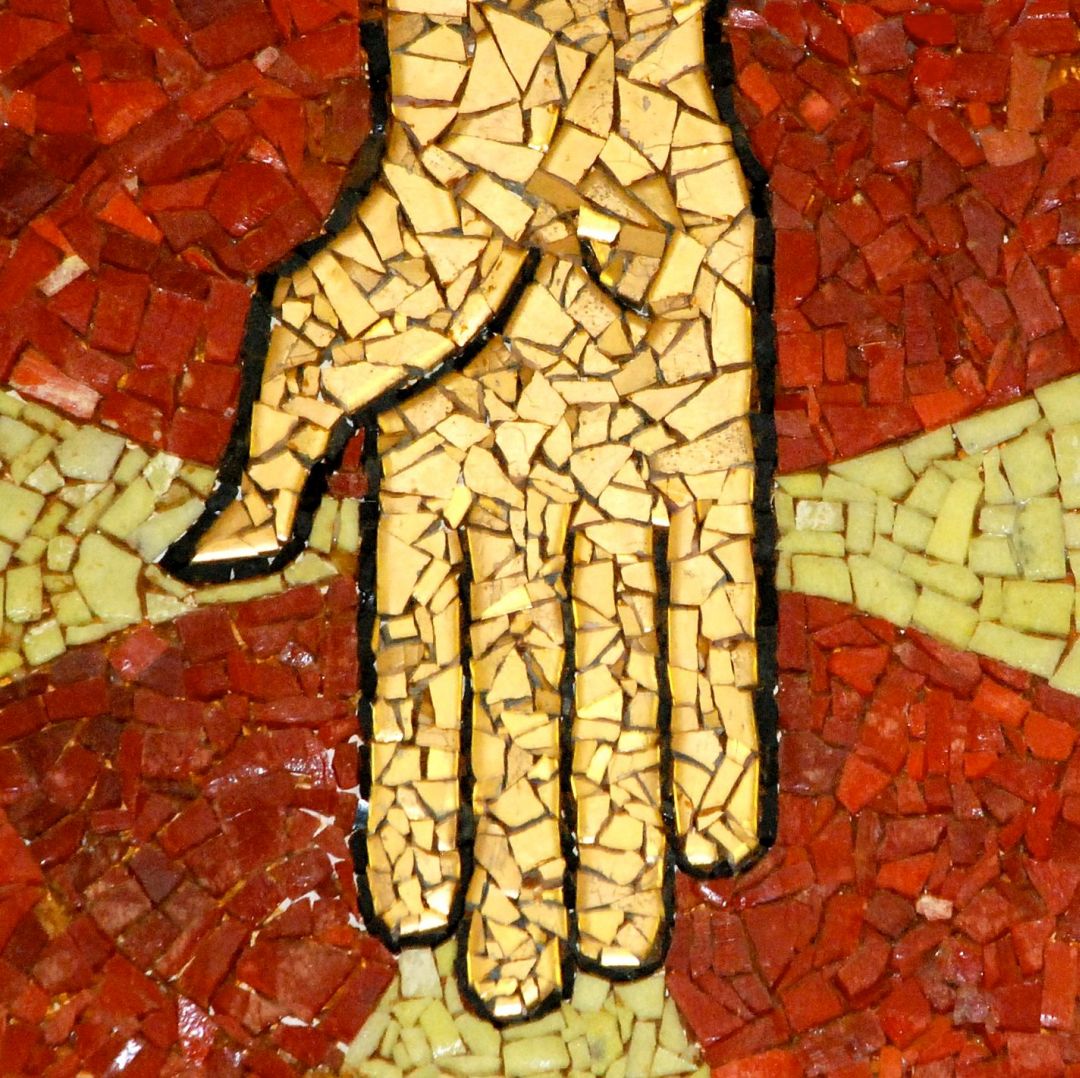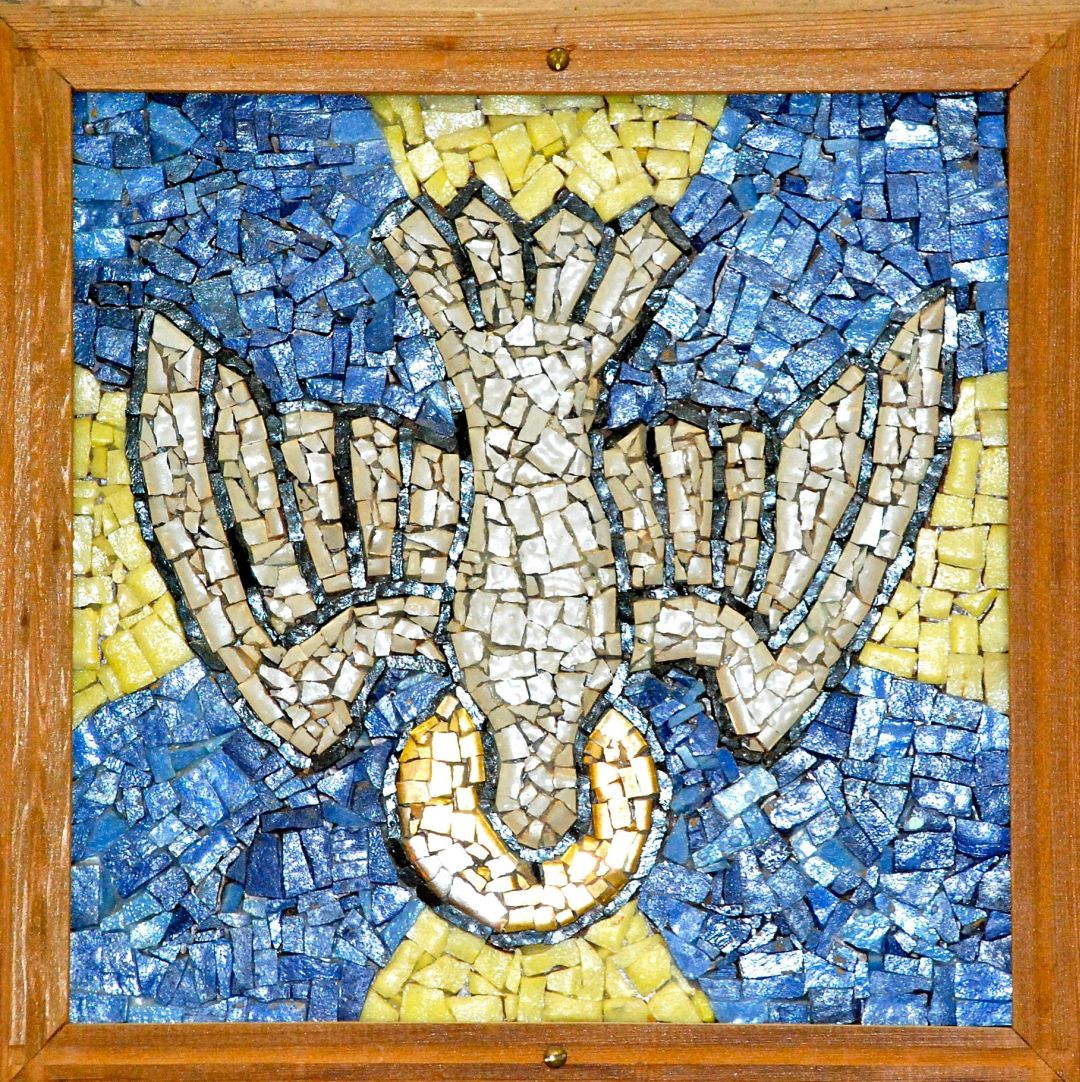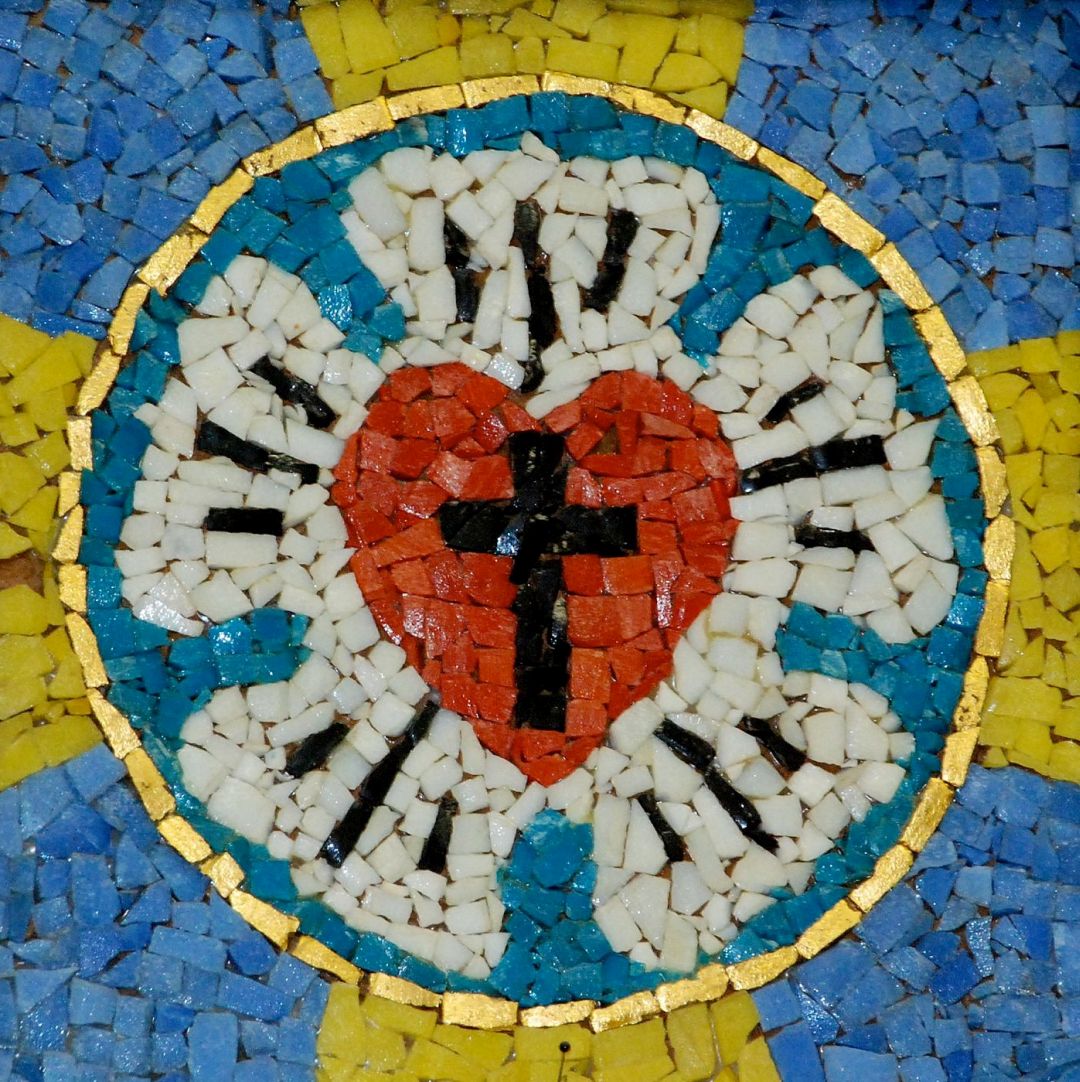I’ve been thinking about my grandmother. She passed on December 5th, 2009, at age 89. She was a devoted Lutheran, and these photos are of mosaics that my mother helped make in youth group at St. Timothy’s Lutheran Church in El Paso, TX, a congregation that my grandmother and grandfather helped to start 55 years ago.
I remember these mosaics from the summers we visited my grandparents. Lutherans already seemed exotic, with their wine at communion and real bread rather than pressed white wafers, and they also had these mosaics. My church at home was plain, a Moravian church as ordinary as a basement in a suburban home, and we had grape juice at communion to keep from leading anyone astray.
When my mother sent these photos, I asked her how her youth group came to make mosaics. She said a guy she was dating drew the outlines and the pastor went across the border to Juarez and bought bags of glass tile. They broke them up inside plastic bags so the shards wouldn’t go everywhere, glued them down close together and left the pieces ungrouted. The mosaics have been up for 50 years and are still holding together.
It never occurred to me that because El Paso was on the border with Mexico, this could be the source of the glass. I love Mexican smalti; it has a variegated surface full of speckles and flecks of color. Italy of course is the cradle of smalti mosaic glass, but in 1949, Elpidio Perdomo founded Mosaicos Venecianos de Mexico (MVM). Mosaic became a pivotal art form in Mexico, with murals by Diego Rivera and Juan O’Gorman. Perhaps the tiles my mother used were from MVM. I have come full circle, now making my own mosaics with Mexican glass.
My grandmother enjoyed my mosaics and bought some to give as Christmas presents. I’m glad I was able to share them with her. This bottom mosaic is of the Luther Rose, the seal designed by Martin Luther as a symbol of his theology. He writes about the meaning of each color and form:
In a word, it places the believer into a white joyful rose, for this faith does not give peace and joy as the world gives. Therefore, the rose is to be white, not red, for white is the color of the spirits and of all angels.
This rose, moreover, is fixed in a sky-blue field, symbolizing that such joy in the Spirit and in faith is a beginning of the future heavenly joy. It is already a part of faith, and is grasped through hope, even though not yet manifest.
And around this field is a golden ring, to signify that such bliss in heaven is endless, and more precious than all joys and goods, just as gold is the most valuable and precious metal.
I know this is what my grandmother believed, and that what she grasped through hope, is now manifest.




Beautiful! Thanks for sharing.
Margaret,
I loved the mosaics! I am sure they are from MVM. I help manage a mosaic school with one of the owners of MVM, Malena Perdomo. I will be adding a Gallery page soon.
Thank you!
Michele Petno, Director
Mosaics In Mexico
Cuernavaca, Mexico
407-484-0645
Michele,
Thanks for letting me know you think they are from MVM! That’s cool!
Margaret
What a great story! Mosaics in Mexico sounds like a fun field trip! Thanks for sharing!
Carrie
Oh, your grandmother and I would get along so well! – yes, gold represents heavenly light and peace; yet, despite its preciousness and beauty, can only hint at the true peace ‘beyond understanding ‘. Thanks for stopping by my little blog!